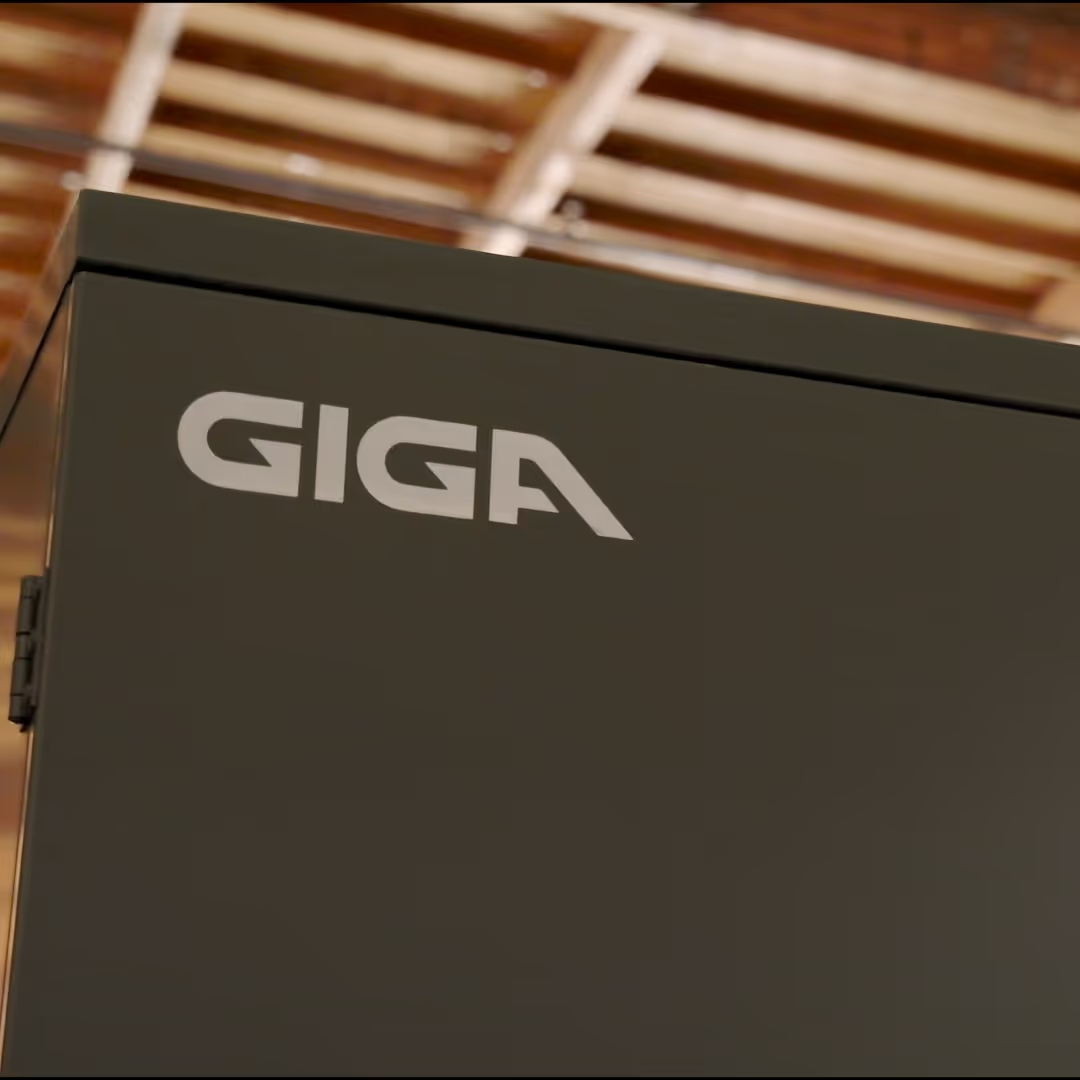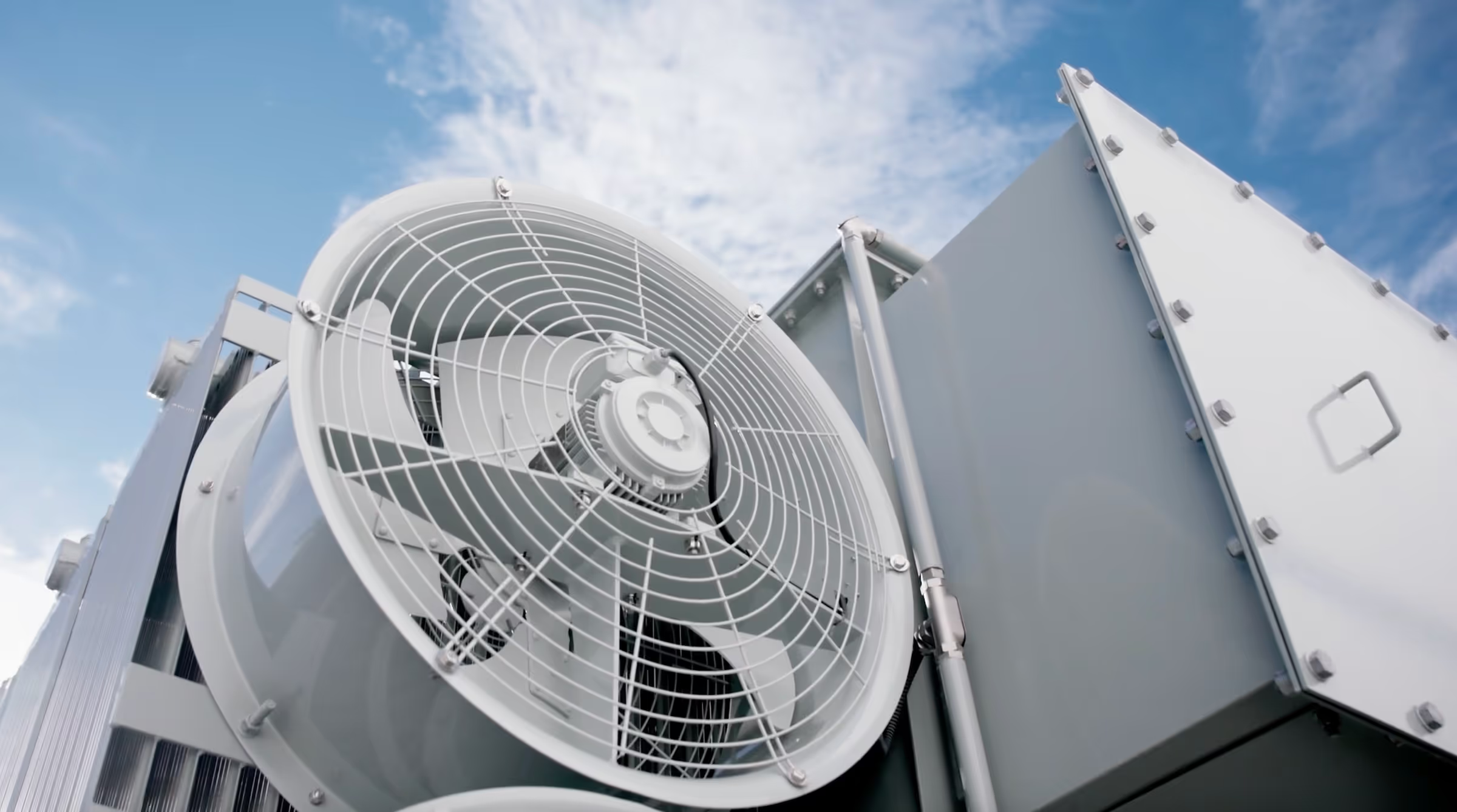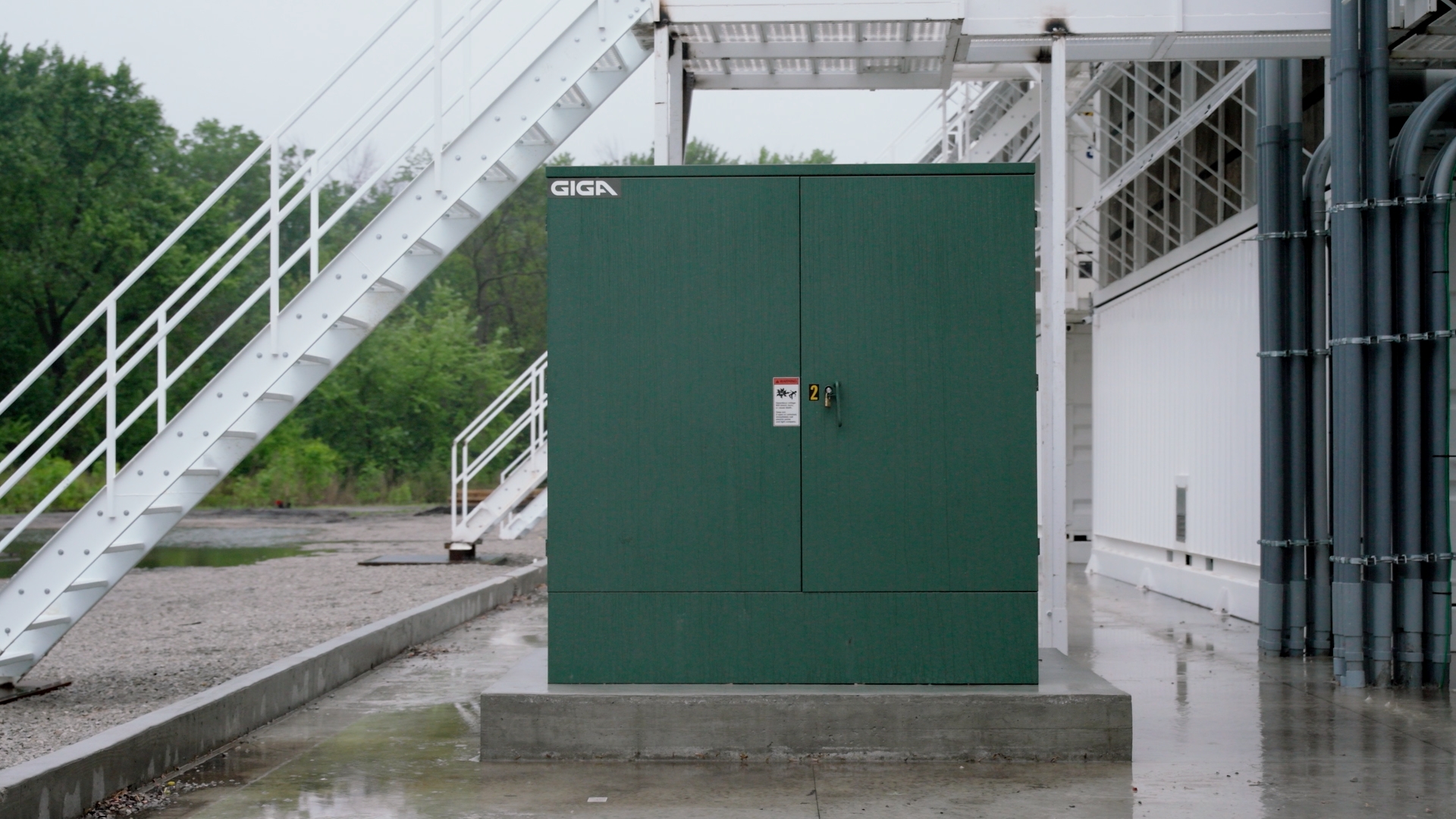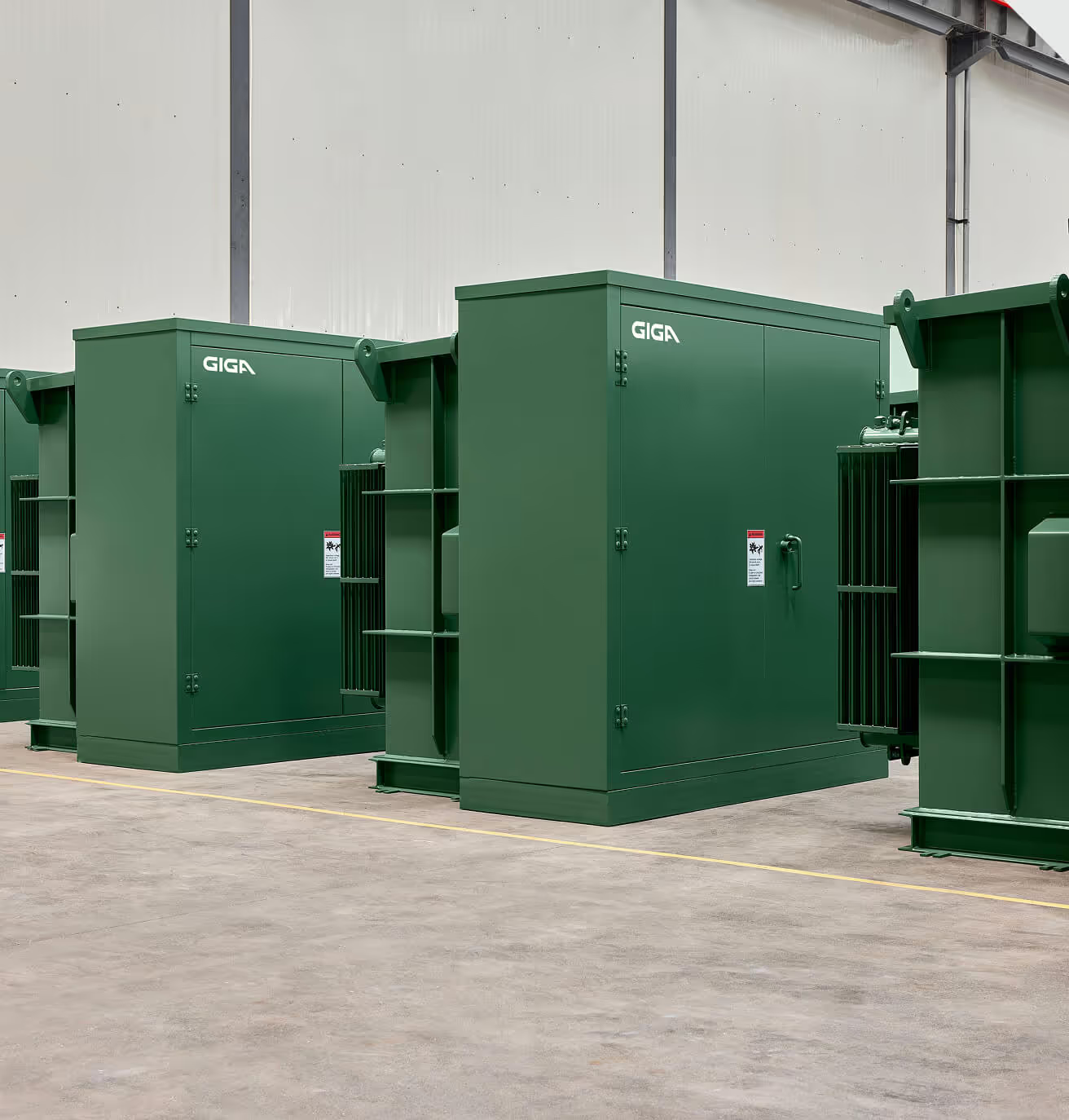A practical guide to transformer connection types
For electricians and professionals who work directly with transformers, understanding connection types isn’t just theoretical: it’s a daily practical necessity. Transformer connection configurations affect everything from load compatibility to safety and maintenance. Maybe you're troubleshooting a grounded neutral issue or planning a new install for a data center, but whatever you’re doing, choosing the right connection type can be the difference between a reliable system and a massive problem.
This guide covers the two major transformer connection types: delta and wye. We’ll also cover grounding considerations, phase shift implications, and practical guidance on selecting the right setup for your project.
What is a connection in a transformer?
In this discussion, a transformer’s connection type refers specifically to how the three phases in a three-phase transformer are electrically linked to one another on both the primary and secondary windings. This wiring arrangement (whether in a delta, wye, or a combination of the two) determines how voltage is distributed, whether a neutral is available, how the system is grounded, and how it responds to different load conditions.
Delta (Δ) transformer connections
Delta connections are commonly used on the primary, or high-voltage, side of a transformer. In this setup, the three transformer windings are connected in series, meaning each phase is connected end-to-end in a closed loop, forming a connection that can be depicted as a closed triangle (hence the term delta, for the Greek letter Δ). Because each phase is connected directly to two other phases, there is no neutral wire.
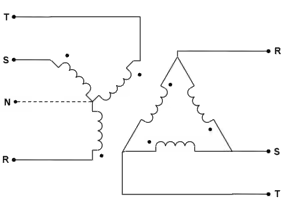
This makes delta configurations ideal for balanced three-phase loads where a neutral is not required. You’ll often find delta connections in industrial environments where heavy machinery operates on consistent three-phase power. One of the key advantages is their ability to handle high currents. The closed-loop design distributes load across the windings evenly and tolerates transient imbalances well.
However, a delta system’s lack of a neutral wire can be a limitation. Systems that require line-to-neutral connections, like when feeding mixed three-phase and single-phase loads, may be incompatible with a delta-only setup. Also, without a neutral, grounding options are reduced, which can affect safety and system protection if not properly accounted for.
Wye (Y or star) transformer connections
Wye connections are frequently found on the secondary, or low-voltage, side of a transformer. In a wye configuration, one end of each of the three transformer windings is connected to a common central point called a neutral, while the other ends are connected to the phase lines. This creates a “Y” shape, hence the name.
The biggest functional advantage of wye configurations is the presence of the neutral point. This allows the system to supply both line-to-line and line-to-neutral voltages, making it extremely versatile for applications that serve mixed loads, such as commercial buildings or residential feeders.
Another benefit is grounding. The neutral point can be grounded directly, creating a stable reference to earth for the system and improving both safety and protection against overvoltages. However, if the neutral isn’t grounded correctly or becomes disconnected, fault tolerance drops significantly. Imbalances or ground faults can cause unexpected voltage swings that may damage equipment.
Learn more: Giga’s comprehensive guide to transformer cores and coils
Phase relations between HV and LV in transformer design
To this point in this guide, we have covered different types of transformer configurations. Next, we will cover phase relations between high voltage and low voltage in overall transformer design. Transformers can have any combination of delta-delta, delta-wye, wye-delta, and wye-wye.
Delta-Wye (Δ-Y): The industry workhorse
Delta-wye is one of the most common transformer configurations, widely used in utility systems, data centers, and large-scale commercial installations. In this setup, the primary winding is connected in delta, and the secondary winding is connected in wye. In layperson’s terms, this provides a blend of two advantages: the robust, high-current handling of delta on the primary side and the neutral-supplying versatility of wye on the secondary. Of course, every design has nuance, so these features may not be appropriate depending on the project in question.
These transformers simplify system grounding, since the wye secondary can be grounded even if the primary side is ungrounded. However, it’s important to account for the phase shift that delta-wye configurations introduce between the primary and secondary voltages. This has implications when you’re trying to synchronize generators or interface with other parts of a power system. If unaccounted for, mismatched phase angles can lead to circulating currents or synchronization failures.
Wye-Wye (Y-Y): A helpful variation
Though less common than delta-wye, wye-wye connections do have specific use cases, especially where a neutral conductor is required on both the primary and secondary sides. This is useful in certain utility distribution scenarios and in facilities where consistent voltage references across multiple transformers are needed.
The presence of neutrals on both sides simplifies grounding and provides stable voltage references. However, this configuration is sensitive to phase imbalances. If the loads are not carefully balanced, or if grounding is inadequate, the system can suffer from circulating currents or unstable voltage behavior. Using wye-wye safely requires careful design, particularly around neutral grounding and phase angle alignment.
Delta-Delta (Δ-Δ): Built for tough loads
Delta-delta transformers are a staple in heavy-duty industrial settings, especially where large, unbalanced three-phase loads are present and a neutral is not needed. The defining advantage of a delta-delta configuration is its resilience. Since each winding is part of a closed triangle, the system can tolerate unbalanced conditions and still operate effectively.
One of the standout features of delta-delta is that if one of the three transformers in a delta-delta bank fails, the system can continue running in an open-delta (or V) configuration. While capacity is reduced, this capability allows critical operations to continue until repairs can be made, a valuable feature in manufacturing or processing environments.
Delta-delta also simplifies transformer construction and can be more cost-effective in scenarios where line-to-neutral voltages aren’t required. However, its lack of a neutral wire limits flexibility, and the absence of galvanic isolation between primary and secondary sides means more care must be taken with system integration.
Learn more: What are the different types of transformers?
Grounding considerations by connection type
Grounding practices vary significantly depending on transformer configuration. Getting this right is crucial for system safety and equipment protection.
Wye configurations are typically grounded at the neutral point, creating a low-impedance path for fault currents. This reduces the risk of transient overvoltages and provides a stable reference voltage for connected equipment.
Delta configurations, on the other hand, don’t include a neutral point and therefore require different strategies. In some cases, a grounding transformer, like a zigzag transformer or a Y-D transformer, is used to create an artificial neutral for grounding. Alternatively, delta systems may be operated ungrounded or with a high-resistance ground, depending on the application and regulatory requirements.
Improper or incomplete grounding can result in dangerous conditions, including electric shock hazards, equipment insulation failure, or even arc flash events. Always consult local codes and system specs when designing or modifying grounding schemes.
Learn more: Fusing options for padmount transformers
Phase shift and synchronization concerns
When planning transformer installations, the phase shift is an often overlooked but critical factor. This is especially relevant in delta-wye transformer configurations, which inherently introduce a phase shift between the primary and secondary voltages. Understanding this shift is essential when integrating transformers into systems with existing generation sources or interconnecting multiple transformers.
If two transformers with mismatched phase angles are paralleled without correction, the resulting circulating currents can lead to overheating, reduced efficiency, and potential equipment damage. In systems that use generators, synchronizing voltage phase angles is non-negotiable. Even a slight deviation in timing can prevent synchronization relays from closing, delay system startup, or cause destructive faults.
Engineers can address phase shift issues by ensuring all transformers within a system are of the same vector group or by applying phase-shifting transformers designed to realign angles. While this may seem like an advanced concern, neglecting it during the design stage can create costly problems during commissioning.
How to choose the right transformer configuration
Choosing the right transformer connection type isn’t a matter of preference. It depends on your load type, safety requirements, system layout, and regulatory environment.
Consider your load profile. If your application involves mostly balanced three-phase loads — such as motors, industrial equipment, or manufacturing systems — a delta connection on the primary side might be sufficient. However, if the system needs to support line-to-neutral loads (like in commercial or mixed-use buildings), a wye secondary with a grounded neutral is typically required.
Next, assess your need for a neutral conductor. Systems that include single-phase loads or require a stable voltage reference point will benefit from a wye configuration. Keep in mind that not all installations need a neutral: many industrial plants run entirely on delta setups without issue.
Safety and grounding practices also play a key role. If your system needs a direct ground reference for overvoltage protection, a wye configuration, especially on the secondary side, is often preferred. Conversely, delta configurations may require additional equipment, like grounding transformers, to meet the same safety standards.
Phase alignment and system integration should also guide your decision. For systems with interconnected transformers, generators, or UPS units, understanding phase shift and matching vector groups is essential. Delta-wye configurations, while common, can introduce complications if the phase shift is not accounted for in downstream equipment.
Never ignore local regulatory requirements and utility interconnection rules. Many utilities specify what transformer types are acceptable for intertie, grounding, and protection coordination. Ignoring these rules can delay approvals or force redesigns.
In practice, transformer configuration is rarely a one-size-fits-all decision. It’s about matching technical capabilities to your site’s physical conditions and operational needs. Working with knowledgeable professionals ensures you choose a setup that meets both functional and compliance requirements.
Get help matching the right setup to your site
Every electrical environment is different. What works for one industrial site may not work for a mixed-use commercial complex or a mission-critical data center. That’s why Giga works directly with electricians, facility managers, and power engineers to help select the right transformer connection type for each project.
Whether you need high-current capacity, a neutral for line-to-ground loads, or robust fault protection, we can help assess your site’s unique conditions and operational goals. From initial consultation through deployment, our team makes sure your transformer setup supports long-term reliability, safety, and compliance.
If you’re planning a new install, upgrading a facility, or just want a second set of eyes on your transformer configuration, reach out to Giga. We’ll help you make confident, technically sound decisions grounded in real-world experience.

